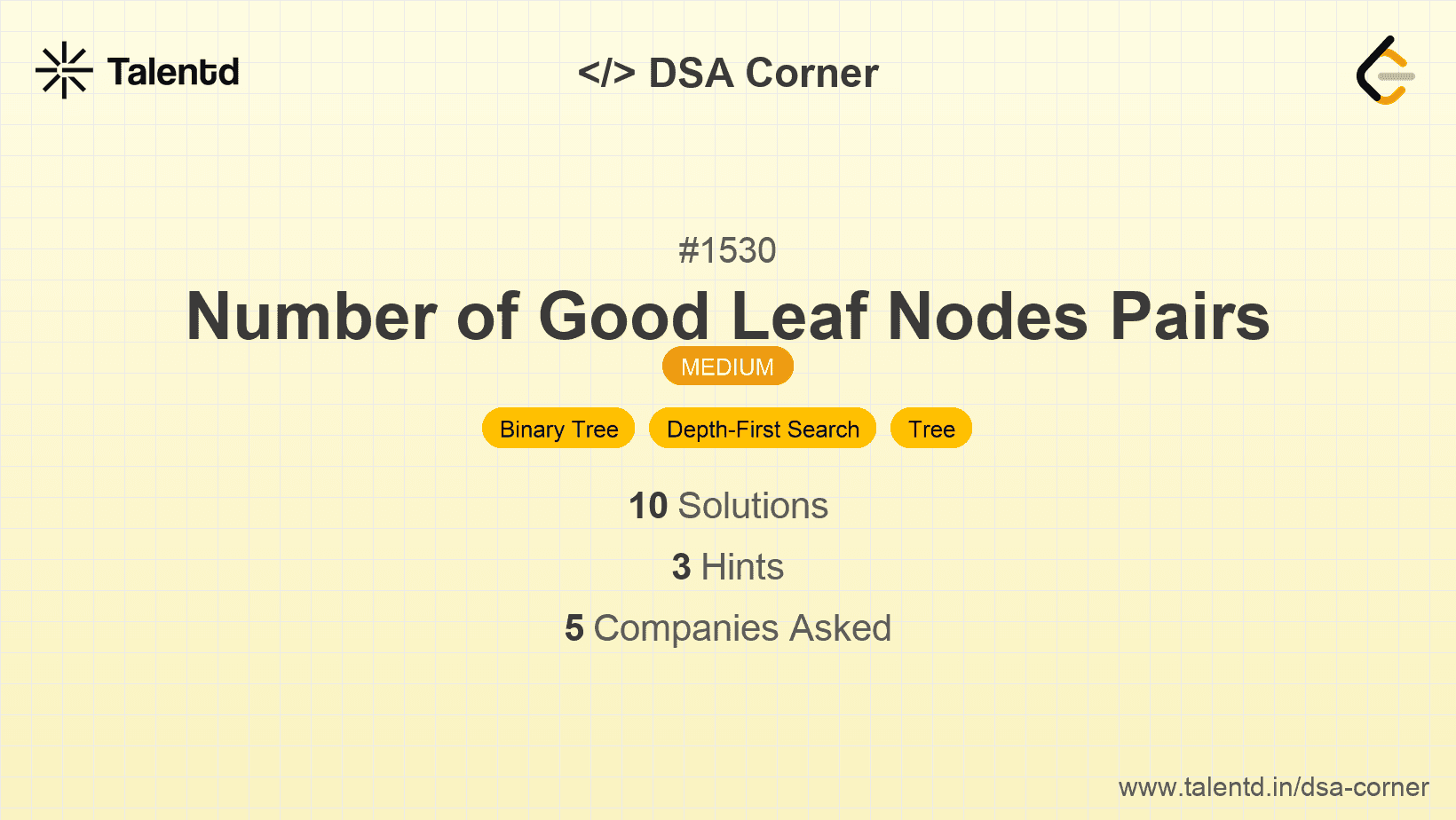
Sponsored
Sponsored
This approach involves a DFS traversal of the tree. For each node, we compute the number of leaf nodes at each possible distance. We merge the results from the left and right subtrees and count the valid leaf pairs.
Time Complexity: O(n * distance) due to traversing the entire tree and computing leaf pairs.
Space Complexity: O(distance) for storing distance arrays.
1public class TreeNode {
2 public int val;
3 public TreeNode left;
4 public TreeNode right;
5 public TreeNode(int x) { val = x; }
6}
7
8public class Solution {
9 public int CountPairs(TreeNode root, int distance) {
10 int result = 0;
11 Dfs(root, distance, ref result);
12 return result;
13 }
14
15 private int[] Dfs(TreeNode node, int distance, ref int result) {
16 if (node == null) return new int[distance + 1];
17 if (node.left == null && node.right == null) {
18 int[] leaves = new int[distance + 1];
19 leaves[1] = 1;
20 return leaves;
21 }
22
23 int[] left = Dfs(node.left, distance, ref result);
24 int[] right = Dfs(node.right, distance, ref result);
25
26 for (int i = 1; i <= distance; i++) {
27 for (int j = 1; j <= distance - i; j++) {
28 result += left[i] * right[j];
29 }
30 }
31
32 int[] leaves = new int[distance + 1];
33 for (int i = 1; i < distance; i++) {
34 leaves[i + 1] = left[i] + right[i];
35 }
36 return leaves;
37 }
38}The C# solution adopts a ref result variable to manage state consistently in the context of reference types. It performs similarly to its counterparts in managing and merging path distances.
This approach leverages preprocessing leaf distances in a dynamic programming table, which gives quick lookups during pair evaluation. It builds the DP table during a DFS traversal, allowing efficient pair computation afterward.
Time Complexity: Approximately O(n^2) for thorough pairing and evaluation.
Space Complexity: O(n^2) due to pair-wise distance visualization.
1# Python strategy could involve creating structures like dicts or lists to preprocess dynamic pair info, then utilize partial evaluations.
2
Python's dynamic and highly flexible types enable versatile data management in pursuit of this particular solution type, managing memory and computational efficiency.